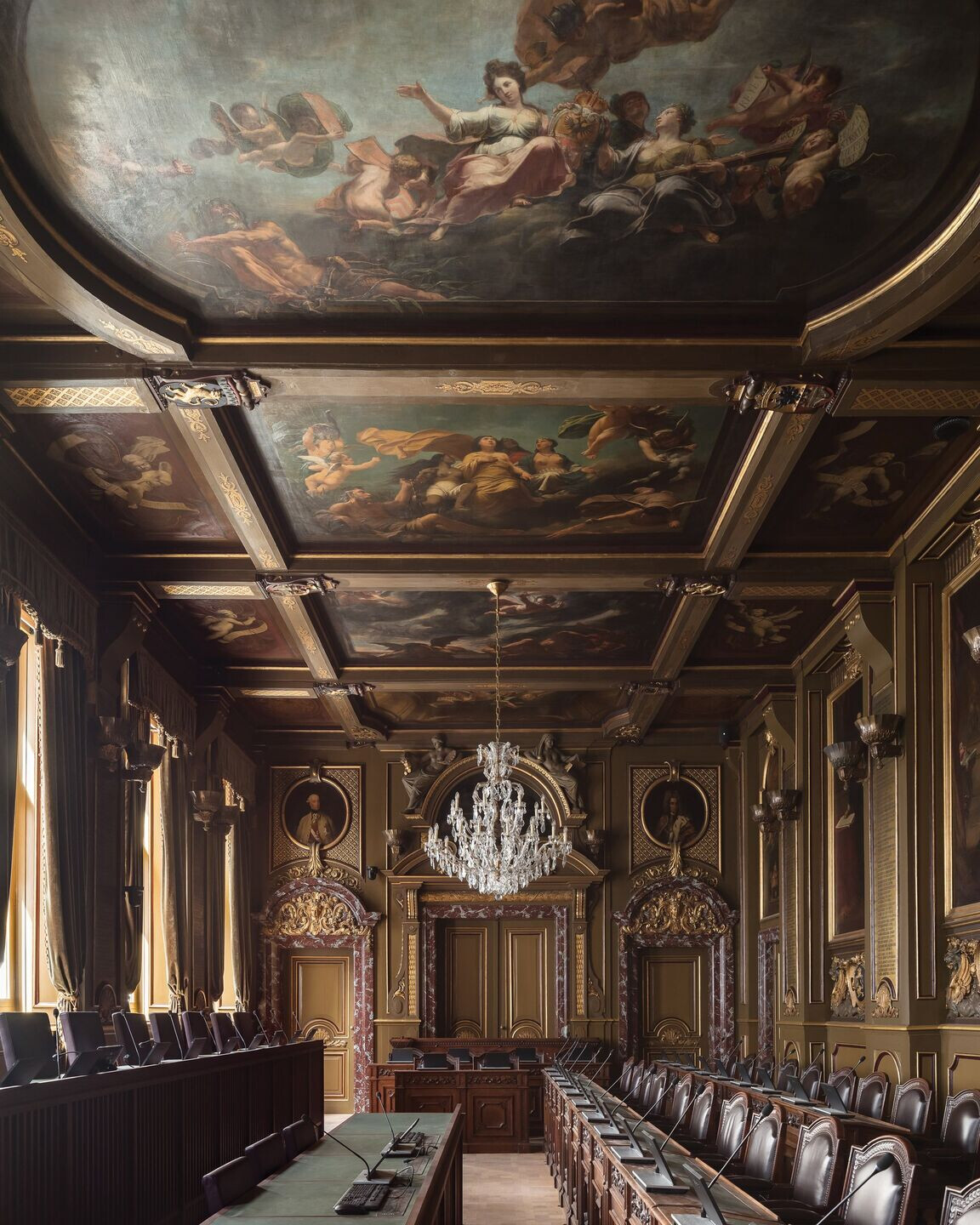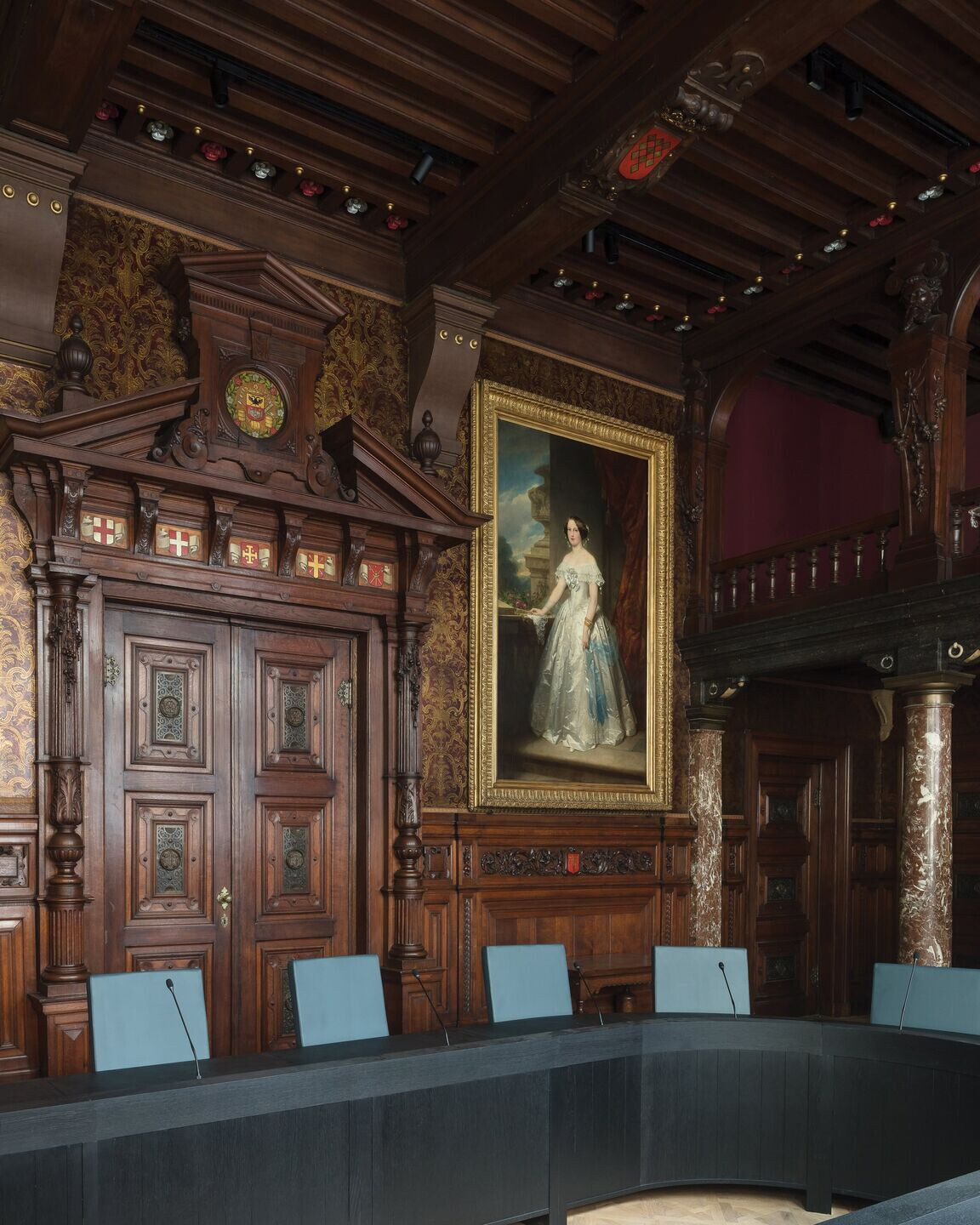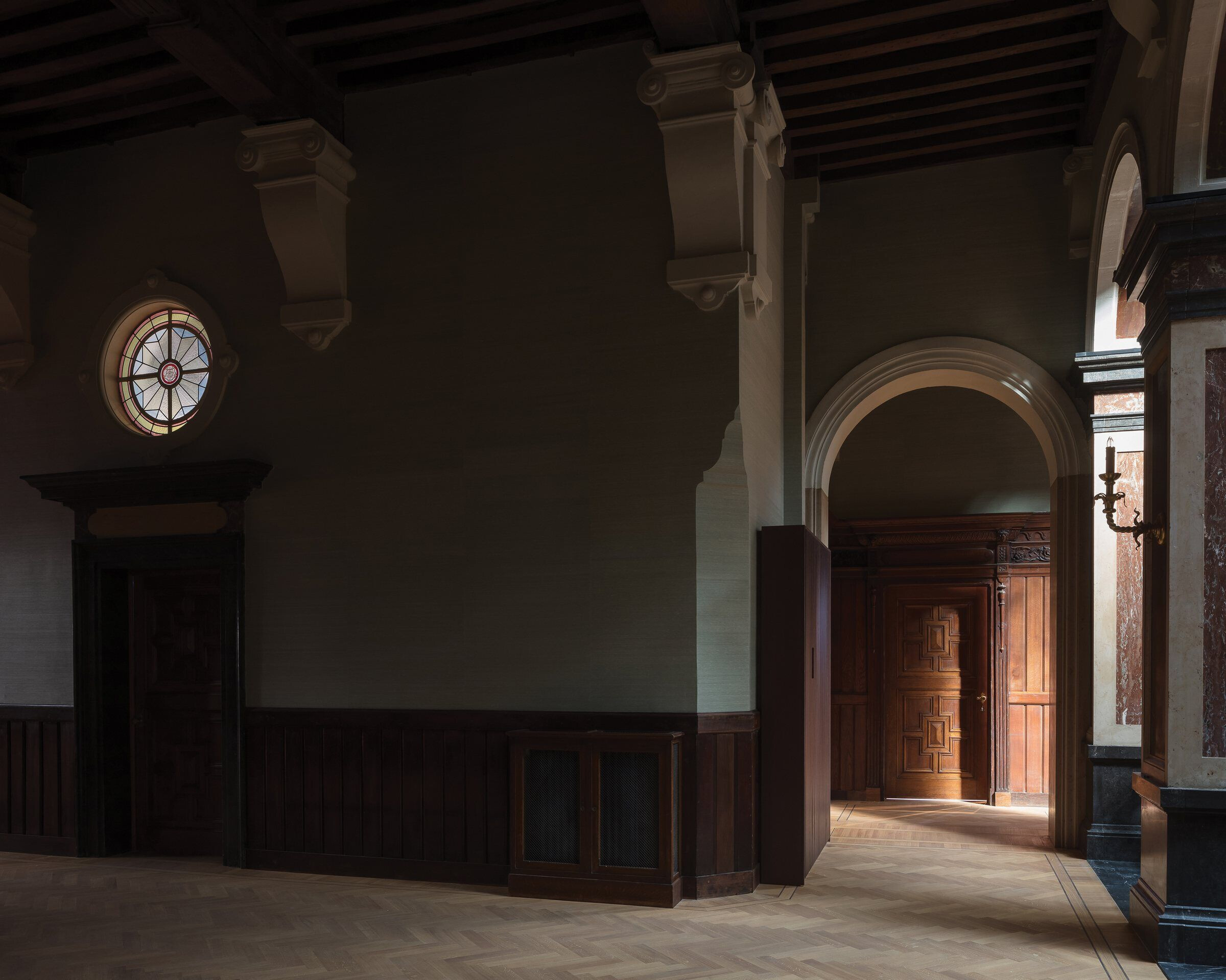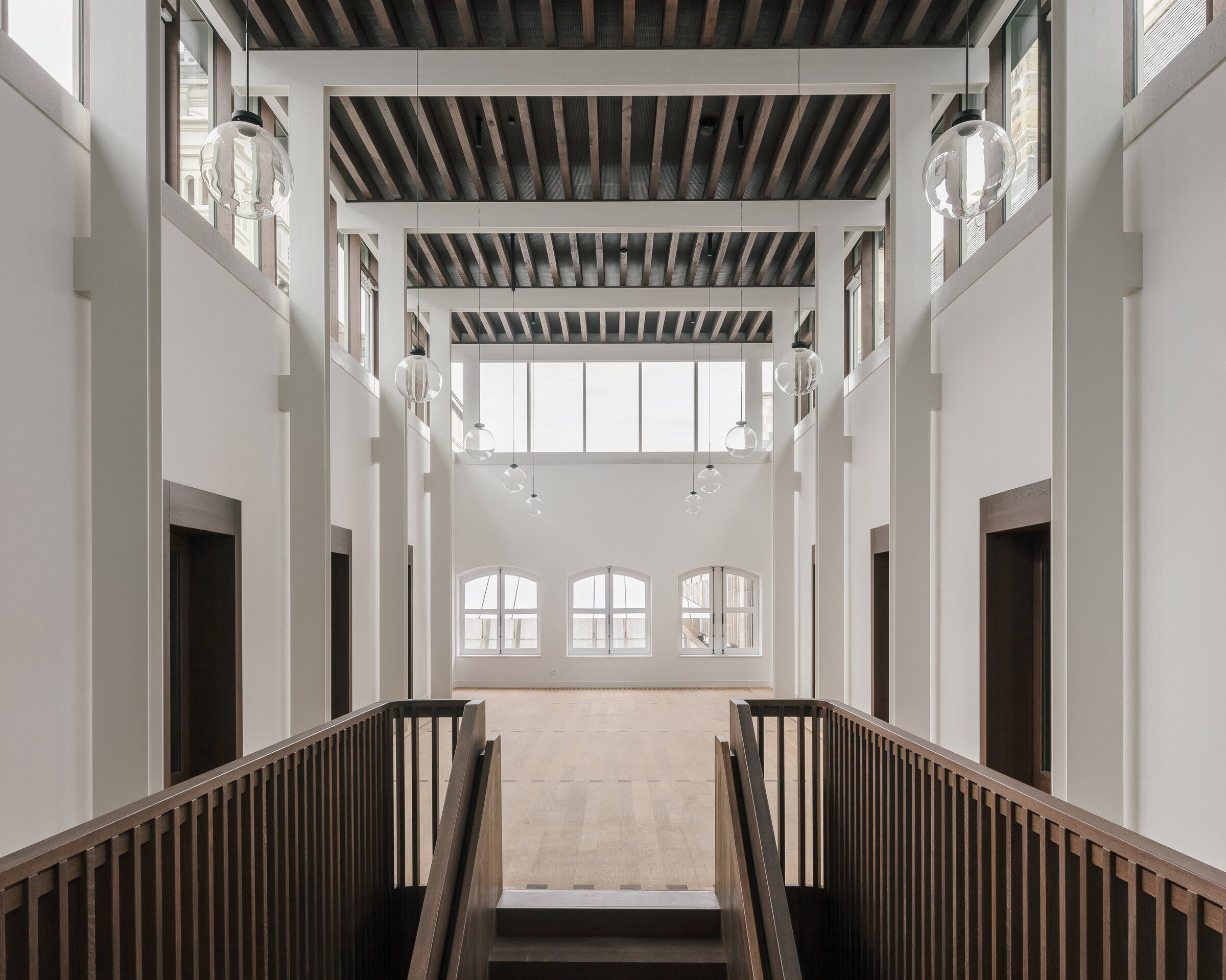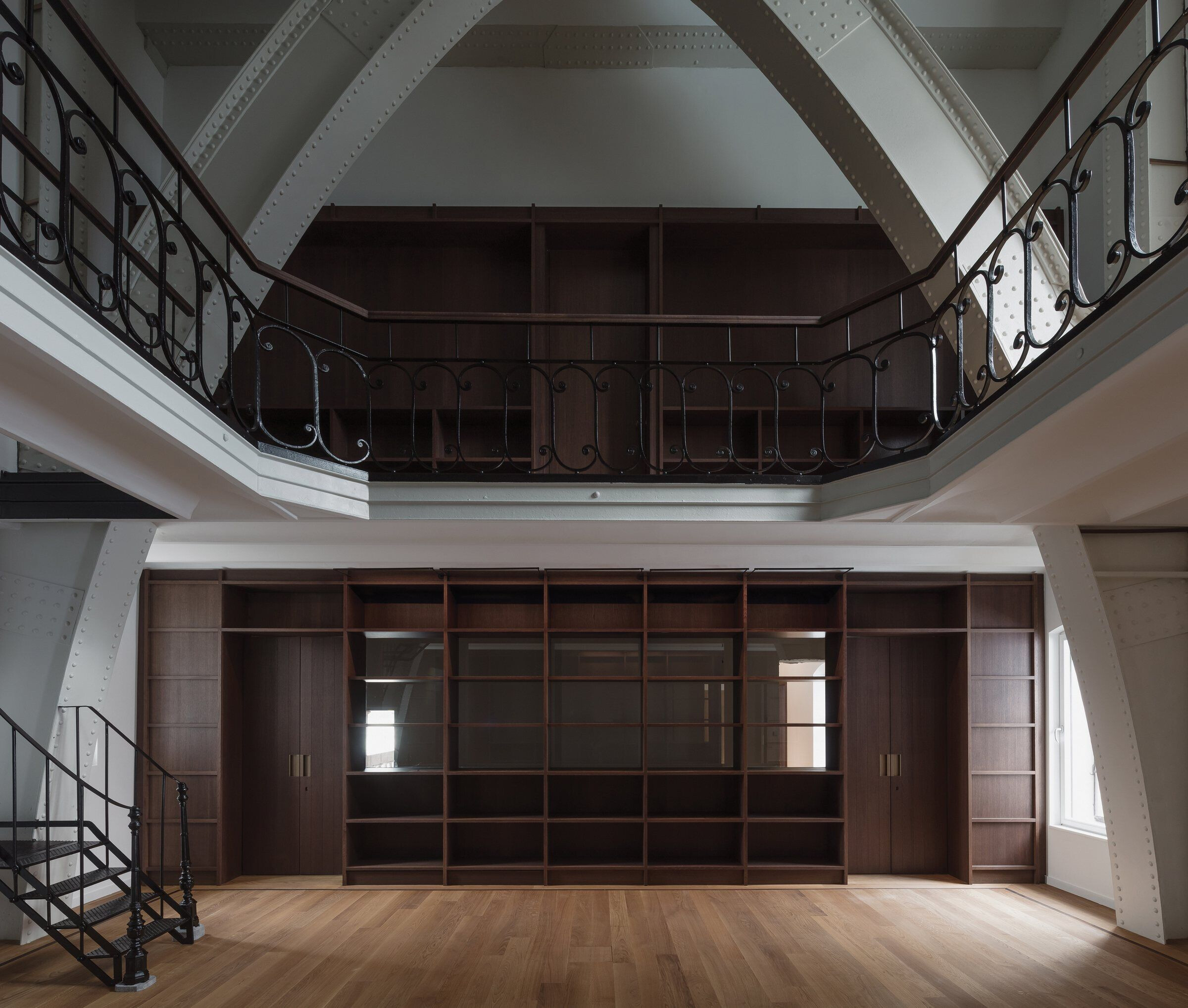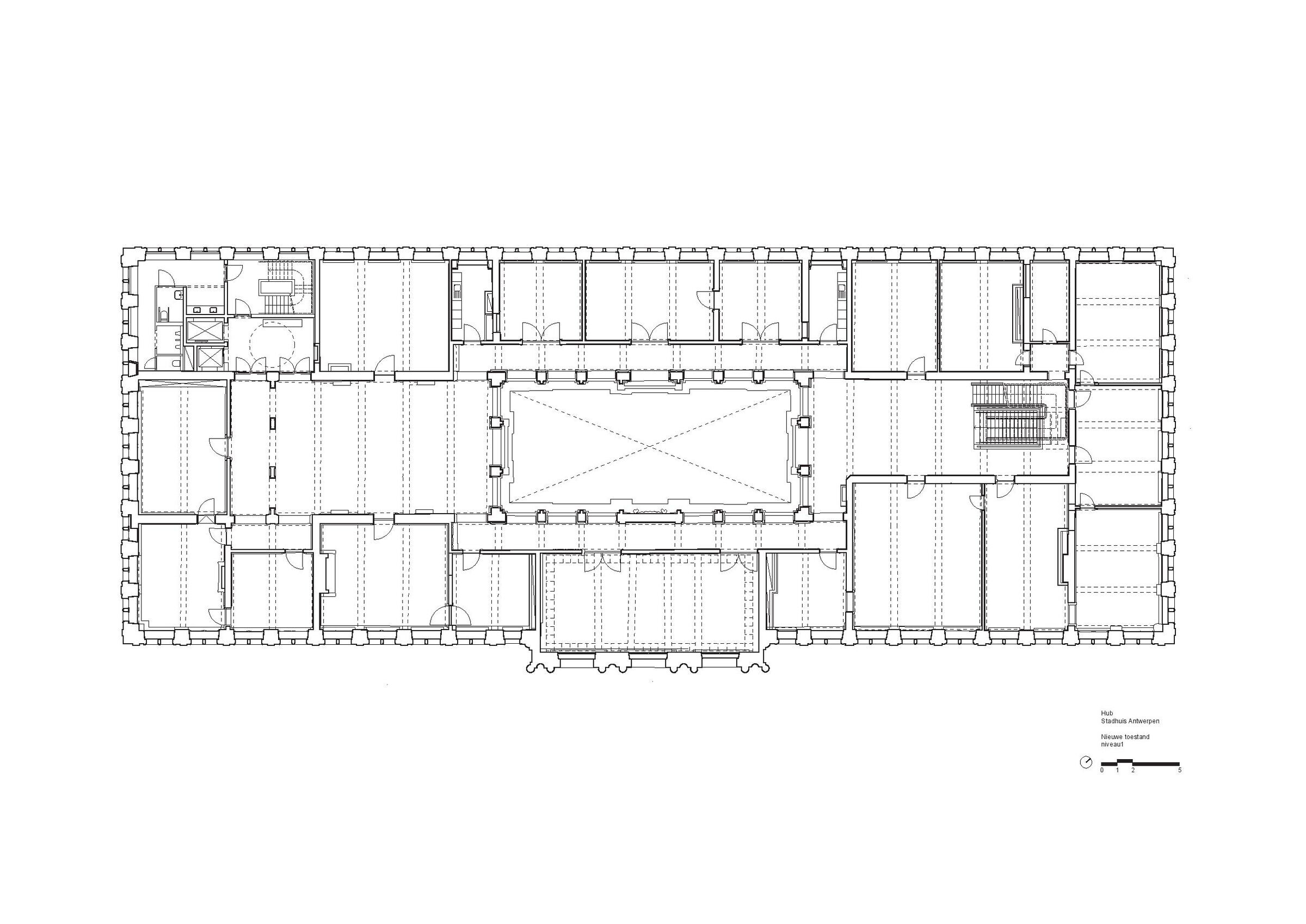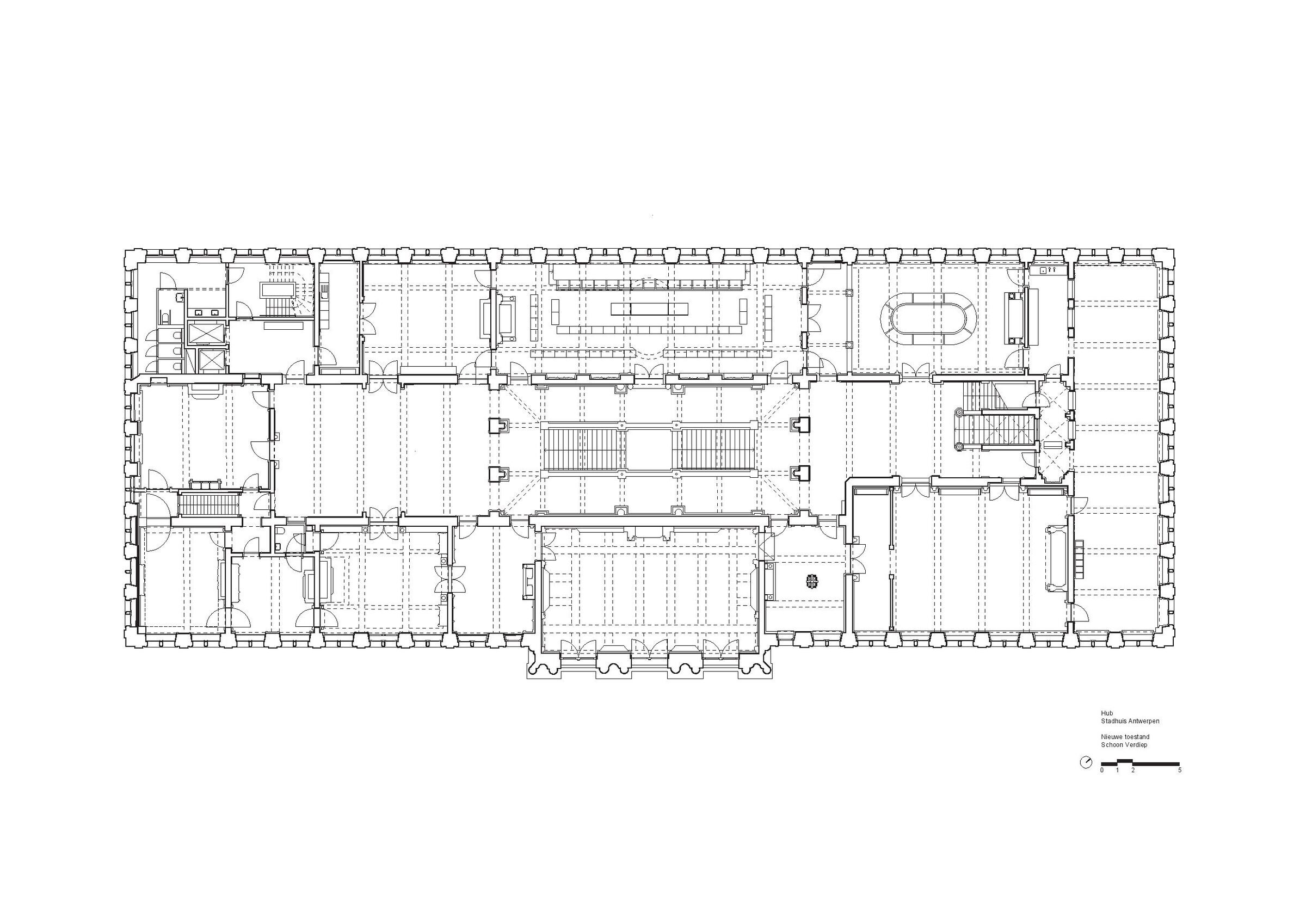The restoration and refurbishment of the historic City Hall fulfils a number of objectives:
- Provides sufficient office space to allow the City of Antwerp to reunify its policymaking functions under one roof.
- Reopens the City Hall to the citizens.
- Improves the building’s sustainability credentials (meeting the BREEAM standard of ‘excellent’) and provides contemporary comfort.
- Rehabilitates the historical structure and the nineteenth-century neoRenaissance interiors.
- Supports the conservation of the historically valuable interiors by improving the internal air quality
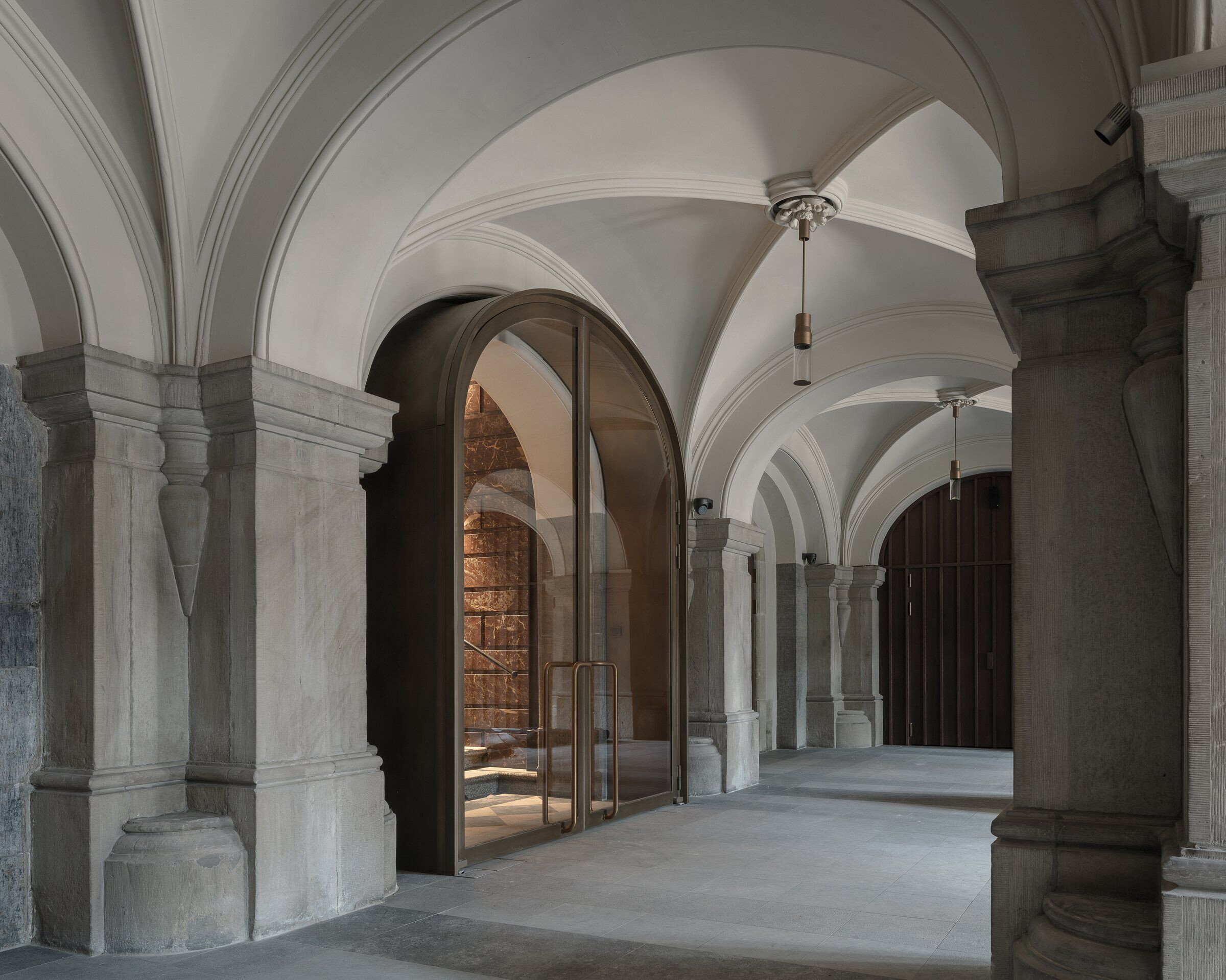
To this end, we made a number of interventions:
- The creation of two centrally located, spacious vestibules on the second floor, which not only enhance the overall experience but also allow this level to be used for offices. We have christened it ‘Het Verlicht Verdiep’ (‘The Illuminated Floor’).
- This ‘infill’ continues the articulation and proportions of the historical design yet adds a distinctly contemporary public interior to the building.
- The main entrance is returned to its historical location on the Grote Markt, the gates on the ground floor are reopened, and both the ground floor and ‘Schoon Verdiep’ (‘Beautiful Floor’) are made accessible to the public.
- Restoration of the historical room structure throughout the building.
- The (hidden) integration of innovative techniques, material use and detailing, as well as the (partially) public shared use, prepares the City Hall for the future.
- A meticulous restoration of the façades, interiors, paintings and historical furniture.
- The project is the result of an Open Call won by the Flemish Government Architect
- The design team worked on the project from 2014 to 2022.

BRIEF HISTORY
The City Hall replaced the old fifteenth-century Schepenhuis [Aldermen’s House]. The plans were drafted by an Antwerp-based commission and artists from abroad, including Cornelis de Vriendt II (called Floris), Loys du Fois, Nicolo Scarini and Willem Paladanus. Cornelis Floris de Vriendt oversaw the works, which lasted from 1561 to 1564. The City Hall was inaugurated in 1565, although the shops and warehouses on the ground floor were operational in 1562. The courtyard (now stairwell) was used as a magazine for the city artillery, and presumably also as a stables.
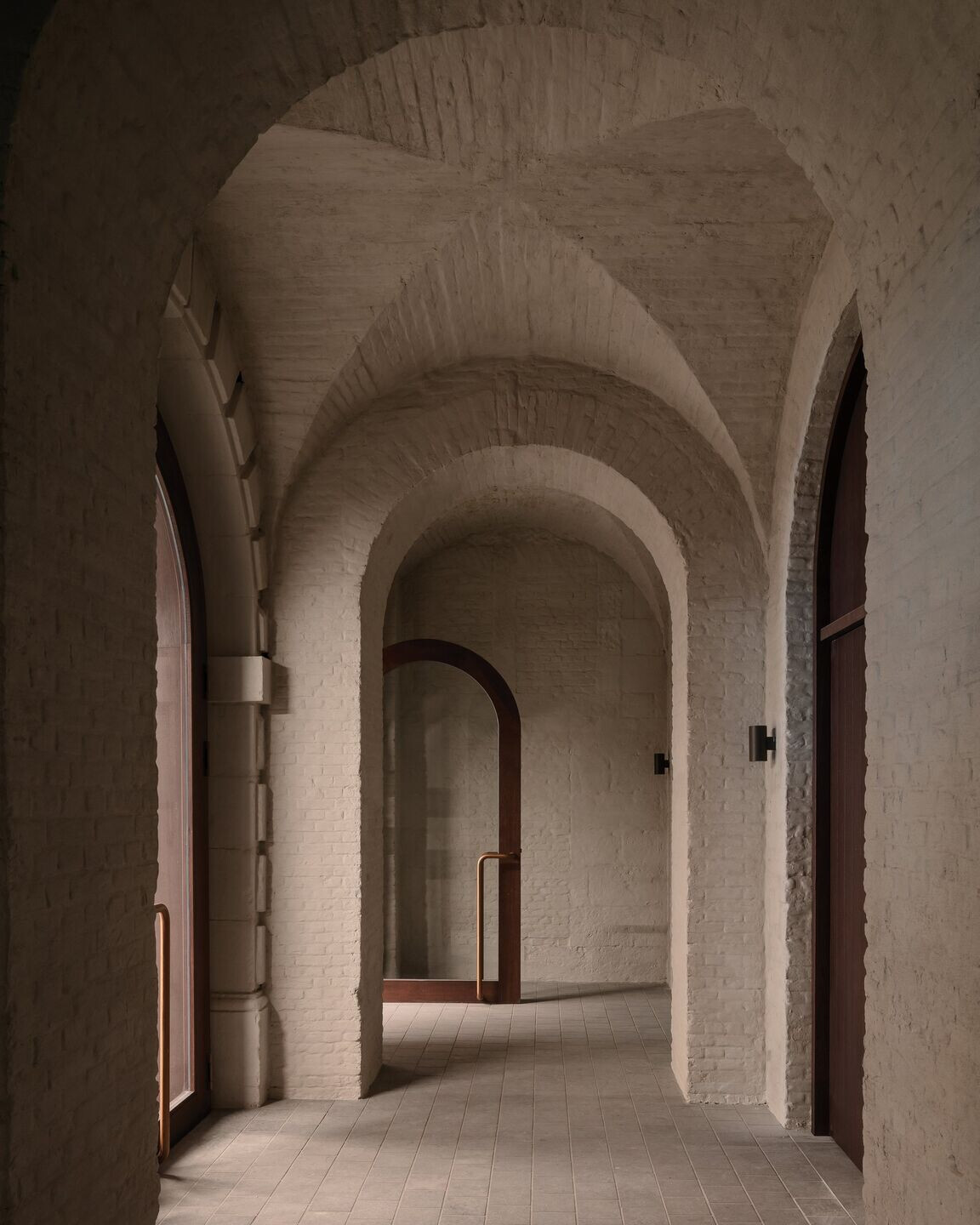
During the Spanish Fury (1576), the City Hall was almost completely destroyed by fire. Only the outer walls remained standing. Recently discovered areas of damage from this period have revealed the devastating power of the fire. Reconstruction began as early as 1579. The interior was furnished during the seventeenth and eighteenth centuries. In the fourth quarter of the eighteenth century, the City Hall was looted by French troops and much of the furniture was burned. The nineteenth-century restoration – the extensive renovations led by the architects Bourla (first half of the century), J. Schadde (third quarter of the century) and P. Dens (third and fourth quarters of the century) – constituted the first major transition of the building and brought it (largely) into the form we know today.
(Based on the Heritage Inventory).

CITY HALL: From Neo-Renaissance Monument To a Home For The City.
The City Hall becomes a true ‘house of the city’. The ground floor and Noble floor will be (partially) opened up to the public while all councilors and their staff will be brought back under one roof. In addition, the façades and interiors needed to be completely restored, while building also had to be readied for future in terms of comfort and energy performance (BREEAM standard: ‘excellent’). These aims mark the second major transition of the historic City Hall. One that can be compared to the very extensive transition of the 19th century in which changes were made deep into the building’s spatial programme. It is therefore important to situate the current programme in the context of past changes to the building.
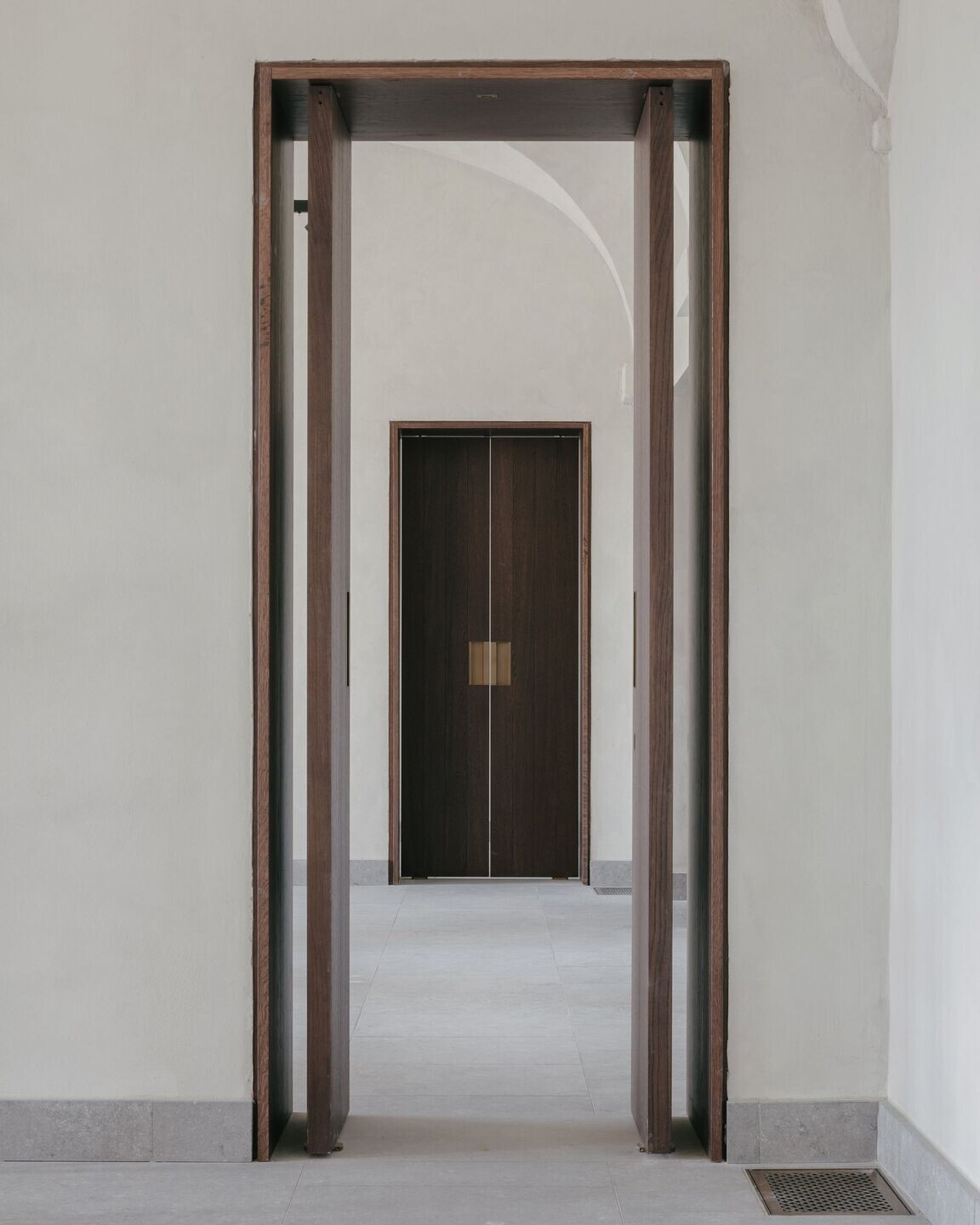
Despite the extent of the transition realised in the 19th century, it nevertheless succeeded in retaining the City Hall’s historic “layered coherence”. There were certain revisions, newly made connections and shifts in emphasis. And, building on the articulation and dimensions typical of the Floris style that defined the original City Hall, a more contemporary atmosphere was created that was evocative of the neo-Flemish renaissance. Nevertheless, the original structure remained legible – it was literally “set forth” – and to the present day remains the canon of the building. Preserving and reinforcing this layered coherence throughout the City Hall’s second historic transition calls for an approach that has respect for the essence of the existing structure. An architecture founded on the conviction that the existing building must define what it needs itself, and that answers to new questions are in fact already contained within the building’s historic structure or “code”.
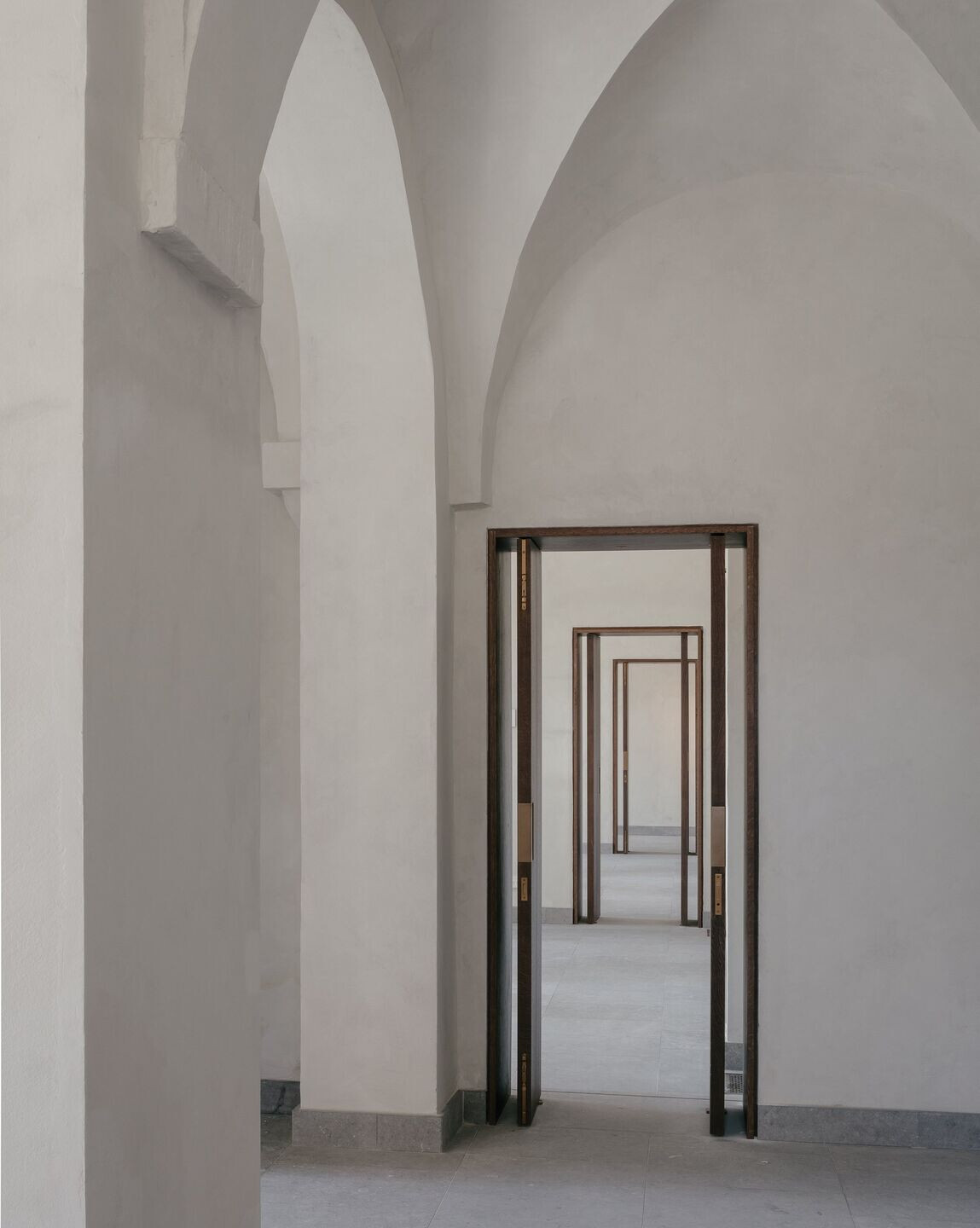
The façades and interiors were restored with great attention and respect for the traces of time. The building did not undergo a ‘rejuvenation cure’ but a dignified restoration. We restored the spatial structure of the ground floor so that the space regains its brightness. All the gates can be opened again and the main entrance is located on the Grote Markt.

The second or ‘Illuminated Floor’, currently unknown to many people, will be made equally important as the ‘Noble Floor’, because it is here that the majority of councilors and their staff will be housed. We designed two centrally located, doubleheight spaces – the vestibules - who will let in more daylight and open up the view towards the skies and historic bell tower. The vestibules extend the spatial articulation of the underlying floors to the level of the new ‘Illuminated Floor’.
Team:
Hub & Origin in participation with Bureau Bouwtechniek
Daidalos Peutz, RCR, BAS, FPC (consultants)
Germaine Kruip (visual artist)
